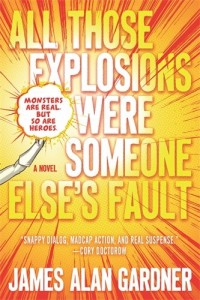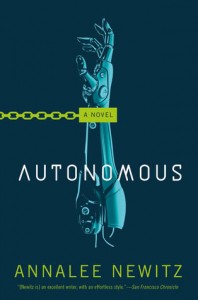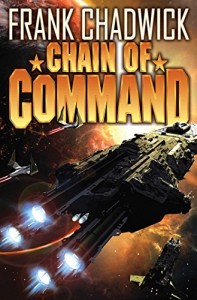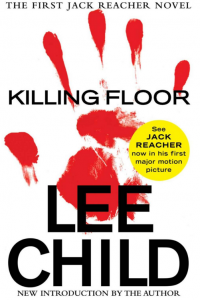 Andy Weir’s new novel breaks away from the world of his first book, The Martian, and moves forward a bit in time to the first lunar city, Artemis. It also breaks away from professional astronauts like Mark Watney to tell the story of a young and fiercely independent woman, Jazz Bashara, who has a talent for trouble, a mild disregard for rules, and a past she’s unable to come to terms with. She’s a glorified delivery person in the main, a smuggler on the side, and she’s living in a locker on the poor side of town to save money for her plan. The author doesn’t tell you what that plan is until the end of the book, which is a pity, as I’d have liked her better at the start if we’d had a clue. So, there you are, a clue.
Andy Weir’s new novel breaks away from the world of his first book, The Martian, and moves forward a bit in time to the first lunar city, Artemis. It also breaks away from professional astronauts like Mark Watney to tell the story of a young and fiercely independent woman, Jazz Bashara, who has a talent for trouble, a mild disregard for rules, and a past she’s unable to come to terms with. She’s a glorified delivery person in the main, a smuggler on the side, and she’s living in a locker on the poor side of town to save money for her plan. The author doesn’t tell you what that plan is until the end of the book, which is a pity, as I’d have liked her better at the start if we’d had a clue. So, there you are, a clue.
We meet Jazz during a stroll on the lunar surface gone wrong. She’s trying to qualify for entry to the EVA Guild, which would pay well and give her more options for her side business, but a cracked suit valve turns up the excitement and spoils her exam. Following that, she makes a run with some contraband to her favorite customer, Trond, a Norwegian ex-pat tech billionaire, who migrated to the moon to give his crippled daughter a chance at a normal life in the moon’s gravity. Trond has a big deal in the works, but it needs someone to step outside the law to pull off, and Jazz is everyone’s favorite petty criminal, so he taps her for it.
It’s something considerably beyond smuggling, and outside Jazz’s comfort zone. But not so far outside that the offer of a massive payday can’t bend her rules. Now Jazz can add industrial saboteur to her rap sheet, or she could if Artemis has rap sheets, or a real police department. As it is, she just has to deal with Rudy, an ex-RCMP cop who moved to the moon and is the total law enforcement presence. For minor offences, Rudy wings it, but for major offences, it’s a one-way trip back to Earth where your country of origin can deal with you.
Jazz gets deeper and deeper into a dangerous and complicated game as she’s caught between corporate giants vying over the future of Artemis, and a lot of money. Though Jazz likes to operate on her own, there are just too many moving parts, so the story goes from Jazz’s solo adventure to an Ocean’s Eleven sort of caper. I wish it had made the transition sooner. Jazz ultimately comes to understand that she has a role to play in determining the colony’s future and that she stands at a pivotal point in the balance of power.
There are a lot of differences between Jazz Bashara and Mark Watney, but there are some common elements too. They’re both smart people and hard-core survivalists, which is fortunate, because the universe doesn’t care what happens to either of them. What intrigued me most is that they’re both very much alone. Mark has the better part of the human race rooting for him, and Jazz has a few admirers in the wings, but they’re both on their own as far as saving themselves goes, at least until the final round, when they both pull together a team effort. Mark’s alone by accident, but Jazz has cut herself off from her father and everyone around her after making a number of mistakes in relationships, burning her bridges behind her. Jazz sorts it out as the book goes on, but it makes it hard to warm up to her—that, and her hazy disregard for rules.
Jazz thinks she’s smarter than the rules, which is a bad attitude for someone living in a totally artificial environment. The moon is too locked down in rules, cliques, and guilds for Jazz’s taste, so she just ignores the ones she disagrees with, and bends the ones she thinks are too restrictive. She’s OK with bringing in a few restricted flammables like cigarettes and sound-absorbing padding to the moon, but draws the line at things she thinks are really dangerous. She manages this with the help of an Earthside accomplice who she got to know through a pen pal assignment she had in grade school. He wanted to be a rocket scientist, but wound up a cargo master. Once, Jazz would have been happy to be a welder like her father, but things change, and now she’s set her sights on being rich.
Artemis is closer to science fiction than The Martian was. Sure, both are fiction and full of science, and both will appeal to SF readers, but these books are not aimed at that audience. Mark Watney’s log for posterity and Jazz’s snappy interior dialog are full of exposition of the sort that will make regular readers of science fiction roll their eyes. That’s OK, because the real audience for this book seems to be mainstream readers who the author is hoping to lure in by making science accessible. It’s closer to science fiction as a genre than The Martian was because it is both more speculative and brings in bigger themes. In The Martian, the world was the way things are now, with a Mars mission added on. In Artemis, the story is based on a big “what if?” which is characteristic of science fiction. Here, the African nation of Kenya has taken advantage of its equatorial location to be become the center of the space faring world and the power behind the creation of Artemis, which is technically an offshore platform under Kenyan jurisdiction. That premise, and the author’s delving into the economic forces involved, bring Artemis into the fold.
There are plenty of lunar colony novels and short stories to compare Artemis to, some of them even with young female protagonists. Both Robert Heinlein’s “The Menace From Earth” (1957) and Podkayne of Mars (1962-63) both share some of the same elements as Artemis, even if Jazz isn’t exactly a girl scout and Podkayne wasn’t on the moon. Much more recently Ian McDonald’s excellent Luna Novels, Luna: New Moon (2015), and the recently-published sequel Luna: Wolf Moon (2017) give an exquisitely-detailed look at lunar culture and technology. The pivotal matriarch’s story is told in his short story, “The Fifth Dragon,” in which a woman reflects on her early days on the moon and the choices she made. You can read it at Tor’s website (https://www.tor.com/2015/09/01/the-fifth-dragon/). Lately it’s been mining H3 for fusion reactors in both books like McDonald’s series or movies like Moon. In Artemis, the moon’s most lucrative business seems to be separating rich tourists and immigrants from their cash. The novel’s plot revolves around coming up with a better economic engine, so I won’t spoil it, but it’s surprising that there weren’t more options already.
Artemis falls short of the mark left by The Martian, at least for me, though in some ways it’s a more ambitious work. It’s possible that Weir is targeting young women with this mix of rebellion and science, and that the book will interest them in doing science and reading more stories like this. That would be great, but Artemis is unlikely to get on any established science fiction reader’s best-of-the-year list.
 (this review was originally posted on SFRevu.com February 2016: All Those Explosions Were Someone Else’s Fault)
(this review was originally posted on SFRevu.com February 2016: All Those Explosions Were Someone Else’s Fault)


